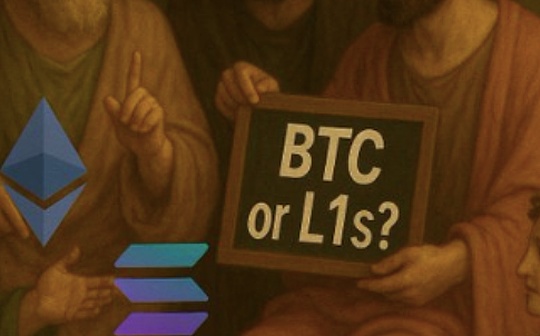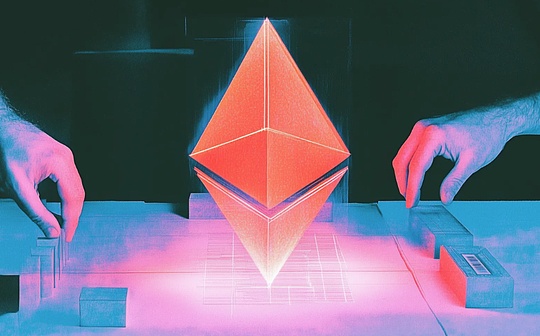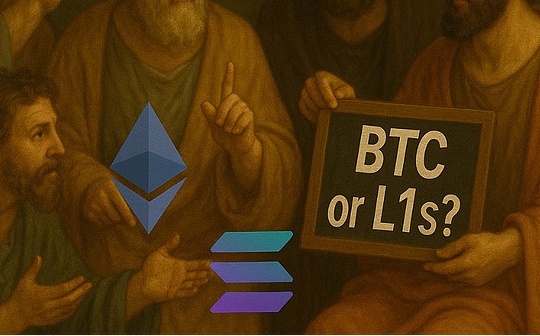
Author: Revelointel Source: SUBSTACK Translation: Shan Ouba, Bitchain Vision
AI is one of the most powerful narratives in the field of cryptocurrencies. If it is not the most powerful; and it will not disappear in the short term.Just yesterday, Apple announced a significant integration with Openai, bringing the generating AI application to the user’s hands.The continued soaring NVDA (Nvida) has caused the interest of native cryptocurrency natives who want to contact the industry.Although there is indeed a demand for neighboring assets in cryptocurrencies, there are not many projects that actually include AI into operation …
In this article, we will focus on Bumper.Bumper is based on the initial premise of protecting downward risks and is leading AI to a new direction.Bumper is a novel Defi protocol that enhances the traditional derivative market by providing a simple, fair and decentralized method of hedging price risk.The agreement uses a loss prevention tool to provide price protection for market collapse and downward fluctuations.The concept of Bumper revolves around the establishment of fair income and loss distribution procedures in the risk market.Different from the traditional confrontation market (usually winners and losers), Bumper’s motivation is to create a system that promotes fairness and resource legitimate allocation.The purpose of BUMPER is to provide a mutual aid price risk facility, which gives priority to minimizing personal losses instead of maximizing personal profits.By paying attention to risk management and protection, Bumper aims to create a safer and reliable environment for participants in the Defi ecosystem.
As you know, cryptocurrencies are essentially volatility; it may be difficult to limit the risk of downlinks while effectively retaining upward potential.This is the field of Bumper’s AI integration; the team uses AI to help predict the price trend, so as to provide users with higher returns, lower premiums, improve efficiency and solvency.
BUMPER background
Bumper is a typical project that is committed to improving its existing agreement through AI.As expected, Bumper’s AI integration strategy revolves around three key AI technology stacks. Each technology stack aims to solve specific challenges and enhance the protocol:
-
Price forecast
-
Emotional analysis
-
Technical analysis
In order to verify the accuracy and effectiveness of its predictive model, Bumper uses a proprietary agent model -based method (ABM) method.ABM is a computing technology that evaluates their impact on the overall system by simulating the actions and interactions of autonomous proxy (such as individuals, groups or entities).These agents follow the predefined rules and can learn, adapt and evolve based on their experience and interaction.
Agent is important because Bumper operates as a market business and recipient as a bilateral market: the user of one party can hedge risks and pay premiums by locking the base price, and the other party’s users deposit in stable currency liquidity to earn benefits.In order to meet the needs of both markets, the price of premium costs needs to be optimized: if it is too expensive, the recipient will not participate; if it is too cheap, it is not attractive for the city as a city, because they need to bear risks.With the change of price fluctuations and volatility, finding a balance point becomes more complicated.This is why Bumper’s ABM tool is so important, because it can dynamically adjust the premium price according to real -time volatility, absorb the signal of LLMS (large language model), foresee the market trend and actively reconnect.
Through this ABM method that supports AI integration strategies, Bumper predicts that its agreement efficiency will increase the economy by 5-25%, effectively balance the three dilemma of lower premiums, higher returns and solvency strength strength.
Price forecast
The first AI technology stack is related to price prediction and uses a large language model (LLM) with a 70 billion parameter.Bumper trained this LLM with financial data, including the price of the Bitcoin price data set (the opening price, the highest price, the lowest price, the closing price) and the transaction volume index.LLM uses human feedback enhancement learning (RLHF) to fine -tune to reward the predictive models that match the actual price data.The figure below shows the visual prediction of price prediction of the 70 billion parameters of Bumper’s 70 billion parameters.
>
The daily opening price/closing price was initially trained. Later, it was changed to hourly data. The ultimate goal was to include Tick data to obtain higher accuracy.Because the $ BTC Tick data contains hundreds of TB data, it uses retrieval to enhance the generation (RAG) to convert the relationship database information into data vectors.RAG technology not only improves LLM performance, but also promotes the integration of various real -time asset price data flows. This is the key to RLHF in the existing LLM context window.
Emotional analysis
The second AI technology stack focuses on emotional analysis.By using a large -scale language model (LLM) with a pre -trained 8 billion parameter, Bumper can analyze a large number of financial natural language processing (NLP) data, and the unprecedented grain size grasp market emotions.By fine -tuning and advanced NLP technology, Bumper obtained valuable insights on speculators’ attitudes, so as to understand market developments and trends more deeply.
BUMPER’s pre -training LLM takes a wide range of financial NLP data, classify emotions into detailed scores and distribution to provide a detailed understanding of market emotions.This model uses a two -way encoder to express (Bert) for fine -tuning to identify specific financial vocabulary through special NLP training with special NLP training.
Bert is the most advanced natural language processing (NLP) model developed by Google.It understands the context of the words in the sentence by considering the words before and after the target word, not just the previous words.This two -way method enables Bert to capture the complete context of a word, thereby explaining its meaning more accurately.
LLM is equipped with a attention mechanism to make the model weigh the importance of different words in the context and transformer -based structure, thereby effectively identifying market emotions and investor behavior, and predicting future market trends.
>
Technical analysis
The third AI technology stack focuses on technical analysis.Bumper is developing a new method to combine a visual price image analysis with NLP -driven technical indicators by training a large language and visual assistant (LLAVA).This integration enables Bumper to make wise decisions based on historical price data and market trends.
This process includes converting historic Bitcoin prices into chart images.These images will marked technical marks, such as support/resistance, relatively weak index (RSI), and mobile average convergence of departure (MACD).The LLAVA model processs these visual data points and related NLP technical indicators.
>
This end -to -end multi -mode model connects the visual encoder to the large language model (LLM) to enable the system to analyze and explain complex market data.In addition, this model combines long -term memory (LSTM) for historical time sequence prediction, which enhances the ability to predict future market trends based on the trend in the past.
Summarize
The BUMPER project is committed to providing more effective risk management solutions in the cryptocurrency market by integrating AI into its DEFI protocol.The project uses the three major AI technology stacks of price prediction, emotional analysis and technical analysis, combined with the method of agent modeling (ABM) to dynamically adjust premium pricing to adapt to real -time market fluctuations.Through this innovative method, Bumper not only improved the economic efficiency of the agreement, but also created a more fair, safe and reliable environment for the participants.The comprehensive application of these technologies is expected to increase the agreement efficiency of Bumper by 5-25%, effectively solving the problem of balance between reducing premiums, increasing income and enhancing solvency.







